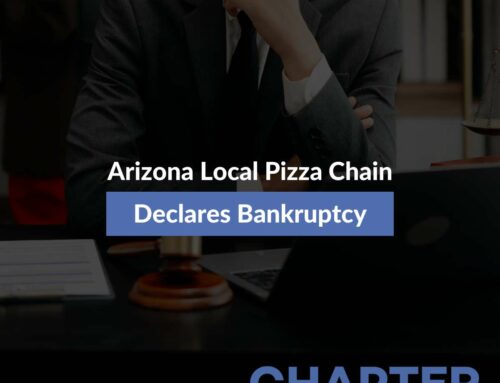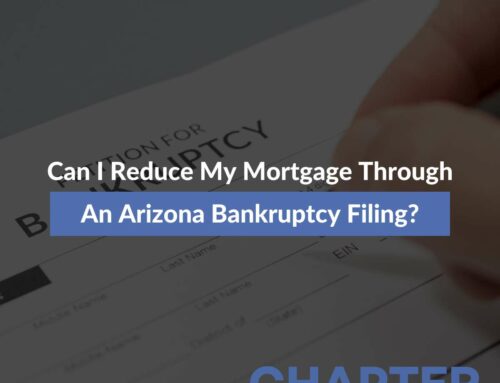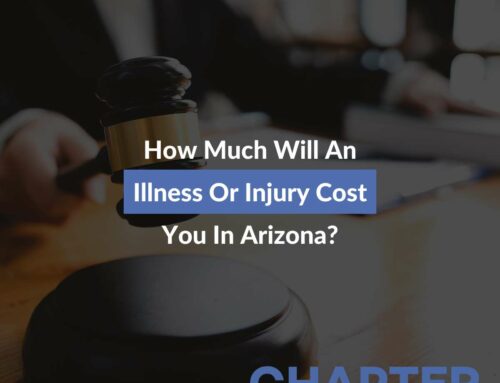Contrary to popular belief, filing bankruptcy doesn’t necessarily mean that the debtor has to give up all of their assets. Certain assets may be protected by exemptions in Chapter 7 bankruptcy. If the debtor files for Chapter 13 bankruptcy, some, if not all, of their secured debts, will be paid in full by the time the case is discharged. But that doesn’t mean that someone who has financed assets will not face any obstacles or issues in a bankruptcy filing. Someone who hasn’t reaffirmed an asset in bankruptcy may be at constant risk of repossession. Reaffirmation agreements help clarify the expectations of both lenders and debtors when a loan survives bankruptcy. However, they must be executed correctly, or the bankruptcy debtor could be at risk of losing the asset they worked so hard to keep. A thorough and skilled bankruptcy attorney can help you avoid the pitfalls of reaffirmation agreements and bankruptcy in general. For your free consultation with one of our experienced Mesa chapter bankruptcy lawyers, call 480-405-1010.

Reaffirmation Agreements
When a debtor files for bankruptcy, it clears their legal obligation to pay many types of debt. This can invalidate payment contracts for assets such as cars, household appliances, and cell phones. While a reaffirmation agreement can be used for any type of asset, we see it used most commonly for motor vehicles. It should also be used for a home loan retained in bankruptcy. It is a new promise by the debtor to pay the loan despite any bankruptcy discharge. That is why it is called a reaffirmation agreement- it is “reaffirming” the loan.
Chapter 7 Bankruptcy
Chapter 7 bankruptcy is the most frequently filed bankruptcy chapter in Phoenix. Despite being the most popular, it has the strictest restrictions when it comes to income, equity held in assets, waiting periods for prior bankruptcies, and more. A debtor can keep a financed asset in a Chapter 7 bankruptcy, but their payment contract will technically be invalidated by the bankruptcy. Some debtors get by just fine by continuing to make their payments as usual, but a reaffirmation agreement provides an extra layer of protection for both the lender and the debtor. If someone keeps a financed asset after a Chapter 7 bankruptcy, their lender can technically repossess the asset at any time. Another disadvantage to not making a reaffirmation agreement is that the lender will no longer be required to report to credit bureaus after bankruptcy.
Chapter 13 Bankruptcy
Chapter 13 bankruptcy doesn’t just clear away debts as Chapter 7 does. Instead, it pays off debts in order of four categories: bankruptcy and legal costs, secured debts, priority debts, and unsecured debts. With the exception of some home mortgages, all secured debts must be paid off in a Chapter 13 bankruptcy plan. That is why it is less common to see reaffirmation agreements in Chapter 13 bankruptcy- a Chapter 13 bankruptcy already contains an agreement for the debtor to pay off all loans with collateral.
Requirements For A Valid Reaffirmation Agreement
A reaffirmation agreement can’t be made without special considerations set forth by the bankruptcy court. The first requirement for a valid reaffirmation agreement is that it is made within 60 days of the debtor’s 341 Meeting of Creditors. The 341 Meeting of Creditors is a hearing held in every bankruptcy case. It is the trustee’s chance to verify the debtor’s identity and deal with any issues on their bankruptcy petition. Creditors are allowed to attend the 341 Meeting of Creditors. They may have questions about the debtor’s finances or simply want to object to being included in the discharge. The 341 Meeting of Creditors is generally held about 30-45 days after the bankruptcy filing date. The 60-day mark after the 341 Meeting of Creditors isn’t just significant because it’s the last day the debtor can file a reaffirmation agreement with the court. Creditors, including those that weren’t in attendance at the 341 Meeting of Creditors, have 60 days to object to their debts being included in the bankruptcy. The debtor must also complete their second online credit counseling course within 60 days of their 341 Meeting of Creditors. The completion certificate for this course must be filed with the court.
Reaffirmation agreements must be made in writing- a verbal contract will not suffice. If the debtor is represented by an attorney, the attorney must sign off on the reaffirmation agreement. Otherwise, the court must certify that the reaffirmation agreement will not cause undue hardship to the debtor. It also must be filed with the court to be considered legally valid and enforceable. Not all financed assets can be reaffirmed through bankruptcy- their equity must meet Arizona’s bankruptcy exemptions or they could be seized by the bankruptcy trustee and sold at auction. Exemptions represent how much equity a debtor can hold in an asset, not the asset’s maximum market value.
What Happens If I Default On My Reaffirmation Agreement After Bankruptcy?
Defaulting on a reaffirmation agreement will have similar consequences as defaulting on any secured loan, except the lender may move quicker to repossess the asset than before bankruptcy. Their available methods of recourse will depend on the reaffirmation agreement’s terms. Usually, the lender can repossess in a swift manner and sell the asset at auction. If the asset sells less for the loan’s balance, the debtor can be charged for the difference, which is known as a repossession deficiency. The lender can also bill for legal fees, repossession fees, interest, etc. The lender can use the repossession deficiency to obtain a judgment against the debtor, which could eventually result in wage garnishment. This would typically be an unsecured debt that would be wiped out by Chapter 7 bankruptcy. However, a bankruptcy debtor will be subject to certain waiting periods for filing again after discharge. If the debtor filed Chapter 7, they must wait 8 years to file Chapter 7 again and 4 years to file Chapter 13. If the debtor filed Chapter 13, they must wait 6 years to file Chapter 7 and 2 years to file Chapter 13 again. That puts the debtor in a more vulnerable position than if their vehicle had been repossessed before filing bankruptcy.
Can I Represent Myself in Bankruptcy with a Reaffirmation Agreement?
A debtor almost always has the right to self-represent in bankruptcy- exceptions would include situations like if the debtor was in a persistent vegetative state or otherwise lost their mental capacity to make legal decisions. However, self-represented debtors have higher rates of case dismissals, meaning they receive all the disadvantages of filing bankruptcy without the benefit of discharging a debt. A bankruptcy attorney can make sure that every aspect of your case goes off without a hitch, including any reaffirmation agreements you may need. Saving money on bankruptcy by representing yourself could end up being far more expensive in the long run. You may qualify to file with our firm with a zero-down, post-filing payment plan. We can help you get your financial situation back on track with affordable pricing and payment plans that help rebuild your credit. At Chapter Bankruptcy Lawyers, our attorneys are experienced and know exactly what our clients are looking for in representation. Get started by calling us at 480-405-1010 to schedule your free case evaluation today.
Chapter Bankruptcy Lawyers
Mesa Office
3707 E Southern Ave
Mesa, AZ 85206
Phone: 480-405-1010
Email: [email protected]
Tempe Office
4500 S Lakeshore Dr #300
Tempe, AZ 85282
Phone: 480-562-6145
Email: [email protected]







